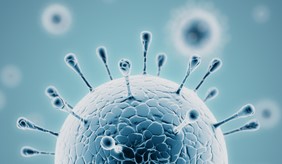Guest Essay
Key Facts in Covid-19 Testing
Wayne Dimech provides a useful overview of SARS-Cov-2 testing and the COVID-19 illness. Wayne Dimech is Executive Manager, Scientific and Business Relations at NRL, Australia (NRL) in Melbourne. He is a recognized expert in infectious disease serology and laboratory quality.
Part 1: Testing for COVID-19
Wayne Dimech, B. Appl Sci.; MASM; MBA; FAIMS; FRCPA (science faculty)
April 2020


[Read Part 2: Maintaining Quality in a State of Emergency]
“Test, test, test.” That was the advice of Tedros Adhanom Ghebreyesus , the Director General of the World Health Organisation (WHO). Over the past month, numerous media releases extol the release of SARS-Cov-2 (COVID-19) tests; 5 minutes tests; only a drop of blood required; photo ops in the Rose Garden for CEOs of test kit manufacturers. Laboratory testing has been pushed to the forefront of the global response to the COVID-19 pandemic. In this unprecedented situation, it is important to understand the role of pathology testing and critical not to assume that the testing is always accurate at this early stage of a new and emerging infection.
First, a brief introduction. I have been a medical microbiology scientist since the early 1980s and for the past two decades worked at the National Serology Reference Laboratory, Australia (NRL), a not-for-profit, WHO Collaborating Centre, based in Melbourne, whose mission is to promote the quality of tests for infectious diseases, globally. NRL actively collaborates with WHO, the US Centres for Disease Control (CDC) and non-government organisations (NGO) such as Foundation Merieux (Lyon, France) and FIND (Geneva, Switzerland). We monitor Australian infectious disease testing laboratories, funded by the Australian Government, and work closely with most of the largest in-vitro diagnostic device (IVD; or test kit) manufacturers, designing and performing test kit evaluations on their behalf. NRL is one of a small number of laboratories world-wide authorised to evaluate test kits on behalf of the WHO Prequalification Program. Understanding the performance of test kits and monitoring their performance is our bread and butter.
See even more stories about COVID-19 Laboratory Challenges...
It is important to know a bit about testing for COVID-19 to understand the impact that this emergency has on the quality of testing. For those not closely connected to laboratory testing, I will describe aspects of COVID-19 testing. Early in the infection, the virus grows in cells at the back of the nose and throat, taking about 5-14 days before symptoms appear. A swab of the nose or throat can be taken and the nucleic acid of the virus detected. The virus is detectable several days before symptoms appear and up to eight day after symptoms. However, this period of detectability will depend on the analytical sensitivity of the nucleic acid test (NAT), how well the sample was taken and the amount of virus present at the time of swabbing. Once the antibody response begins, the virus is cleared from the body. Once the virus is no longer present in the nose/throat, NAT will be negative. In the initial response to the pandemic, NAT protocols were developed by the laboratories using one of several methods described by WHO, Charité Institute of Virology in Germany, the University of Hong Kong (HKU), US CDC and others. Other laboratories have developed their own methods using different approaches.
NAT can target different parts of the viral nucleic acid, which may affect their performance, especially with regard to cross reactivity with other, similar viruses. If the test is less specific, it may have a high rate of false positive results. If it is not designed to a stable part of the viral sequence and this change, it may miss some true positives. Development of laboratory based NAT allowed for rapid introduction of much needed testing. Unfortunately, the CDC test faced initial difficulties, delaying the response and highlighting that, even in the best of laboratories, things can go wrong. These initial “home-brew” or “in-house” tests must be performed in a laboratory, using specialised equipment and performed by scientists and technicians with a high level of expertise. More recently, IVD manufacturers have developed NAT that can be manufactured and supplied in large quantities under strict manufacturing processes. This has allowed rapid scale-up of testing and access to testing by a greater number of laboratories and using automated test platforms.
Generally in viral infections, around the time when symptoms start, as part of a series of complex chemical reactions, white blood cells start making antibodies to parts of the virus. At first these antibodies are relatively non-specific and react to certain parts of the virus called antigens, but may also cross-react to other non-COVID-19 antigens of similar structure. Over time the antibody response matures, becomes more specific and targeted to COVID-19 viral antigens. There is still a possibility that the antibodies may cross react to antigen of the same family of virus (non-COVID-19). There are several different types of antibodies called IgM and IgG. IgM antibodies usually are the first to be detectable, but are transient and become undetectable after a few weeks. IgG is formed around the time of resolution of symptoms and the level continues to increase for a period. Generally, IgG remains detectable in a person’s bloodstream. Another antibody type, IgA, is secreted by mucous membranes in the nose and throat, but is also found in blood. Tests for antibody (serology tests) can be used to determine if a person has been exposed to a particular infection. They are an important tool to determine the percentage of people with IgG antibodies and therefore considered immune, potentially allowing them to return to normal activities and/or to estimate herd immunity (seroprevalence) that is, when sufficient percentage of the population has immunity to slow or stop viral transmission. Detecting different antibodies may help in differentiating those recently infected (by detecting IgM and possibly IgA) from those that have had the infection in the past. This will be very important after the pandemic subsides and possibly a new wave emerges.
Serology tests come in different forms. Some detect one of the immunoglobulin classes, others detect all types (total antibody tests) without differentiating between which type is detected, and others detect each class individually. Currently for COVID-19 testing, the majority of tests are rapid test devices (RDTs), similar to personal use pregnancy tests. RDTs usually require a drop of whole blood from a finger prick. Although they are relatively rapid, taking less than 15 minutes to perform, they are often performed singly or in small batches. It should be noted that an unusually large number of RDTs have come to market since the emergence of COVID-19, including from manufacturers that have not been active in the past. The quality of these tests is unknown. IVD manufacturers will soon release laboratory-based antibody tests that can be performed in large numbers on automated test platforms. One such test is already on the market (SNIBE Diagnostics). This will allow more widespread serology testing.
To summarise, testing for COVID-19, like any other infectious disease, is complex and requires detailed knowledge of the performance of the test kits used. Initial screening for COVID-19 is by detecting viral nucleic acid from swabs of nose and/or throat. NAT can be either developed in-house by the laboratory or by commercial test manufacturers. A swab test that can detect virus only in large qualities may miss early and/or late infections and its accuracy will be dependent on good quality samples. Blood tests detect antibodies to the virus. Different types of antibodies can be detected either as a combination or separately. Serology tests currently are PoCTs that use fingerpick samples but high throughput, serum-based laboratory serology tests are on the way. Each of these tests will be positive at different stages of the disease, as different markers are detectable at different times. So, although the statement “Test, test, test!” is essentially correct, it should come with a caveat: “Test” - using test kits for their stated purpose; “Test” – understanding what you are testing for and what the limitations of the test are, and “Test” - with test kits of known quality.
About the author

Wayne Dimech is Executive Manager, Scientific and Business Relation of the NRL, a World Health Organization (WHO) Collaborating Centre for Diagnostics and Laboratory Support for HIV and AIDS and Other Blood-borne Infections. Mr Dimech obtained a degree in medical laboratory science at Royal Melbourne Institute of Technology (RMIT) University in Melbourne, before undertaking a microbiology fellowship at the Australian Institute of Medical Scientists and completing an MBA at LaTrobe University in Melbourne. He is also a Fellow of the Faculty of Science (Research) of the Royal College of Pathologists Australasia. He has worked in private and public pathology laboratories predominantly in Microbiology Departments, where he specialised in infectious disease serology. Mr Dimech’s research interests include the control and standardisation of assays that detect and monitor blood-borne and sexually transmitted infectious diseases. A particularly interest is the standardization of rubella testing and the monitoring of infectious disease assay variability. He was instrumental in the development of EDCNet, an internet-based program for monitoring quality control test results, which is now used worldwide, and in the optimization of OASYS, software designed to manage the external quality assessment schemes. Mr Dimech is an advisor for numerous national and international working groups, including the Australian Hepatitis B Testing Strategy, Standards Australia and consultancies under the auspice of WHO, International Health Regulations, UNDP and the Global Fund. He has authored or co-authored about 50 articles in international peer-reviewed journals and contributed to three book chapters.
